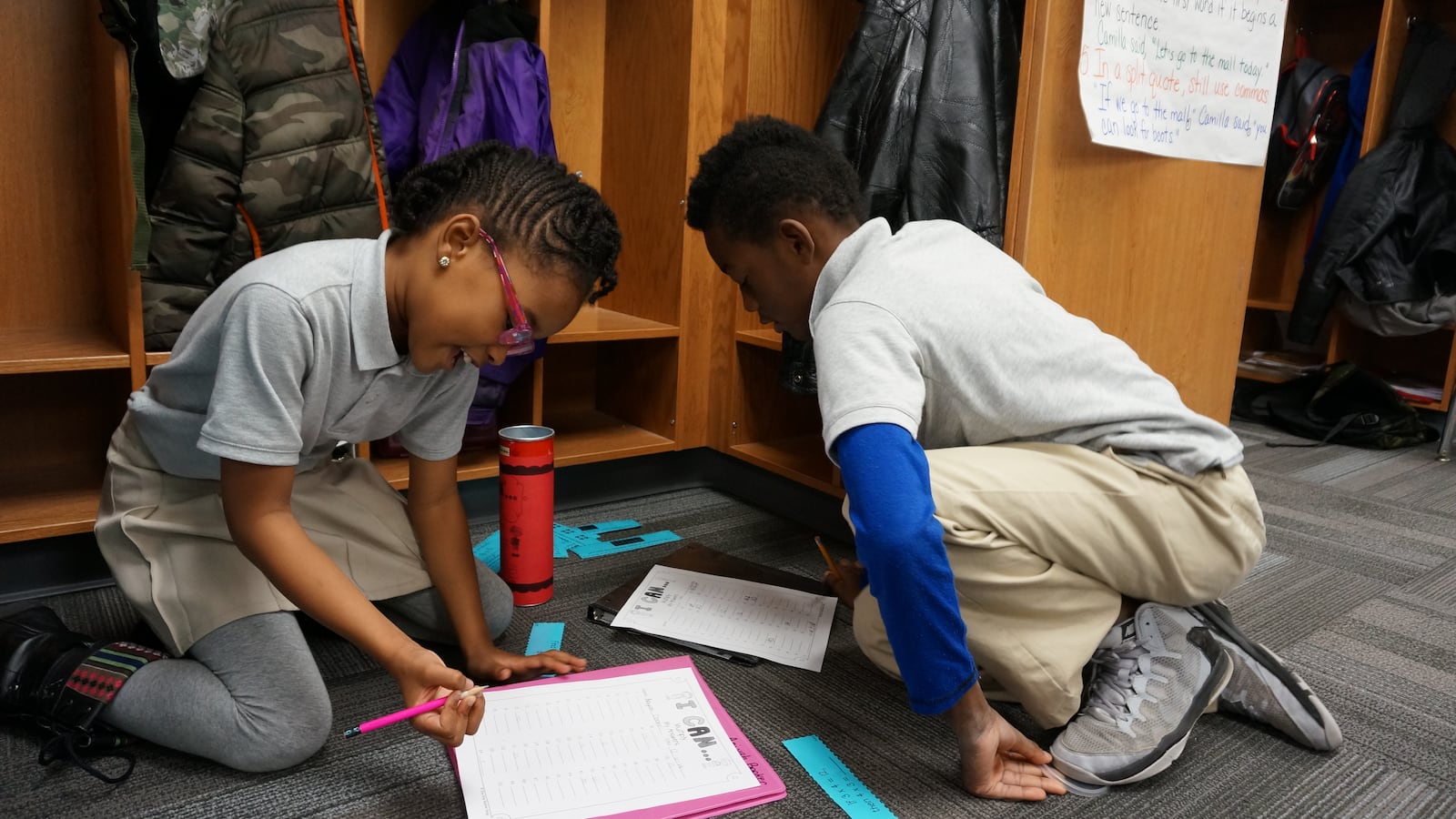Nearly every innovation school in Indianapolis saw a jump in its passing rates on state achievement tests — some by 8 percentage points or more — giving advocates hope that their management approach is working.
Of the eight innovation schools that took the ISTEP test last spring, seven had higher passing rates on both the math and English tests than in the previous year. Five had among the largest gains in the district. In contrast, the number of grade 3-8 students districtwide who passed both tests slipped 1 percentage point.
Indianapolis Public School leaders have embraced innovation schools over the past three years as a way to turn around long-struggling schools and give extra freedoms to successful schools. But this is one of the earliest signs that the strategy may help improve test scores.
“It’s the first quantifiable validation that the direction of IPS, especially in terms of innovation network schools, is really off to a promising start,” said Brandon Brown of the Mind Trust, which has been influential in pushing for innovation schools in the district.
Innovation schools are run by nonprofits or charter operators, but they are ultimately overseen by the district, which gets credit for their test scores on its state evaluation. The approach has been a source of persistent controversy, in part because teachers work for the school manager rather than the district, and are not part of the district union.
Officials have expanded the network of innovation schools over the last three years, and 16 innovation schools now enroll about 6,307 students, nearly 20 percent of the students in the district. But district leaders reacted cautiously to the improvement in test results, describing the innovation schools approach as simply one of its many turnaround strategies.
“It’s super promising,” said school board President Mary Ann Sullivan. “But it’s certainly way, way, way too early to say that this is a successful strategy.”
Superintendent Lewis Ferebee said that while some innovation schools are “bright spots” whose success may hold lessons for the district, it is too early to draw conclusions from ISTEP results.
Two of those bright spots are School 93 and School 103, where passing rates rose by more than 8 percentage points. The campuses are run by the Phalen Leadership Academies charter network, which joined with the team behind the Project Restore turnaround model last year.
Network leader Earl Phalen attributed the rising scores, in part, to the staffing flexibility at innovation schools. Because teachers are not part of the Indianapolis Education Association union, managers can easily replace teachers. They can also offer financial rewards for teachers who are doing a great job, he said.
The network has also had the flexibility to develop its own curriculum, technology, weekly assessments and other practices, he said.
“Those pieces I think all kind of help drive outcomes for our scholars,” Phalen said.
Skeptics and supporters of innovation schools alike emphasized that they don’t consider the test a reliable measure of school quality because of changes in the test and glitches with scoring and administration and because it doesn’t capture information on school culture.
Dountonia Batts, spokeswoman for the IPS Community Coalition, raised the possibility that passing rates might be improving because innovation schools are attracting higher scoring students or pushing out lowering scoring children.
The Coalition, which includes parents and advocates, has been skeptical of the current IPS administration and the embrace of innovation schools.
“ISTEP has gone through a lot of changes in the last couple of years,” Batts said. “Test scores leave out a lot of information about the schools and students.”

